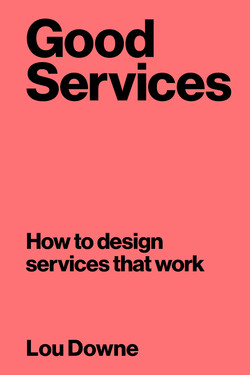Читать книгу Good Services - Lou Downe - Страница 37
На сайте Литреса книга снята с продажи.
ОглавлениеOne of the easiest mistakes people make when they’re telling a story is to forget the beginning.
We’ve all been there; we’re sat in a bar with a friend, or watching a colleague give a presentation, and we realise halfway through the story they’re telling that we have no idea what it is they’re talking about. They’ve missed out where they were, who they were with or a vital fact that the whole story hinges on.
It’s an easy mistake to make, often because the audience we’re talking to is familiar, and we presume a piece of prior knowledge from them that they don’t have. The more familiar the audience, the more likely we are to forget.
The same goes for services. Sometimes we think our service is so familiar or ubiquitous that we forget to explain the most essential part of our service – what the service does.
The UK Driver and Vehicle Licensing Agency (DVLA) has experienced this problem with its ‘report a medical condition’ service. It’s hugely important that people who are driving on the roads around us are fit to do so, but we will all experience some form of medical issue at some point in our lives that may affect our ability to operate a vehicle. When this happens, the DVLA monitors your situation and allows you to return to driving if and when you’re fit to do so.
Most reports are made by people who report a medical condition that does need to be reported – things that affect your driving like having epilepsy or a stroke. However there’s a minority – and quite a sizable minority (close to 40% in fact) – who report medical issues that, if treated, don’t need to be reported at all. Things like ingrown toenails, broken bones and even miscarriages are reported by users who’d rather be safe than sorry when it comes to being on the right side of the law and their insurer.
The problem wasn’t just that users didn’t know which medical conditions to report, the problem was bigger than that. They didn’t understand why they were reporting those conditions in the first place. If they had known that they were supposed to be reporting issues that affected their vision, attention or motor skills to check if they could still drive safely, then it’s highly unlikely so many ingrown toenails would have been reported!
Not knowing the purpose of the service led users who didn’t need to use the service to use it anyway, meaning that thousands of declarations in the system led to delays in reviewing the cases of users who did need to have their condition monitored.
Realising this, the service design teams at DVLA set about identifying the conditions that were the most misreported and created a medical reporting tool that would allow users to be clearly rejected from the system if they reported something like a skin condition or toenail issue. More importantly than this, they explained at the beginning of the service why they were asking for this information, and what the purpose of the service was.
By being clear about the purpose of the service, DVLA ensured that those who needed to use it received the attention they needed, rather than falling to the bottom of the pile, and that those who didn’t need to use it didn’t waste their time.
But this rule of making clear the purpose of your service, and therefore who should use it, doesn’t just apply to a public service context. It’s easy to see how, if a service isn’t applicable to a user who would like to use it (for example, it can’t be delivered in their area) that it could become frustrating. As how your service works is such a large part of your user’s experience, it’s often vitally important to make it clear to your user exactly how it works.
Ofo, a global bicycle-sharing scheme, discovered this when, after introducing its bikes to London, it found that a large number of bikes were seemingly available to users, but nowhere to be seen. After further investigation, the problem revealed itself: users were storing bikes in their gardens, porches and on balconies to ensure they always had access to it when they needed it.
There was nothing in the description of Ofo’s service to explain how the scheme worked, or what it was for, that would explain to users why you shouldn’t hoard a bike on your balcony.
